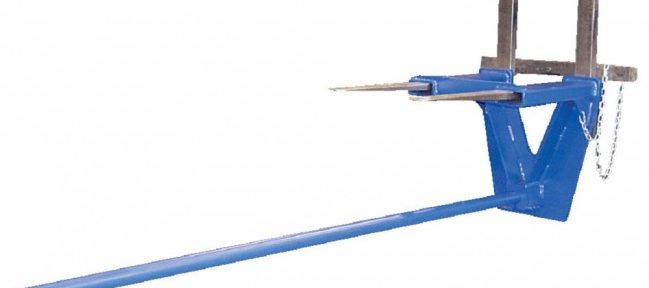Carpet Pole Forklift Attachments Require Special Care

Carpet pole.
Carpets, textiles, and other materials that are stored in long rolls can be awkward to handle. Not only are they heavy, but they require extra room when moving them with a forklift equipped with a carpet pole forklift attachment. One wrong move and the entire load can become unraveled … literally.
Working with carpet pole forklift attachments requires special care and training. Operating a forklift with a carpet pole extending 8, 10, or even 15 feet out from the vehicle is like a battering ram attached the front of the vehicle. It can make turning difficult, it can reduce visibility for the operator, and it can put pedestrians, other vehicles, and property in its path in danger.
How Carpet Poles Work
Carpet poles essentially are long metal poles that attach the front of the forklift to facilitate the picking up of rolled carpets, textiles, or other materials like steel. Depending on the size and capacity of the carpet pole, it can be attached either to the vehicle’s forks by means of a sleeve or other device, or it can be bolted directly to the mast.
The distinctive feature of carpet poles is their length. Because they need to pick up very long rolls or carpet or other materials, they need to be very long themselves. In some cases, carpet poles can be 10 feet or longer in length, compared to traditional forks which typically are only about four or possibly six feet in length.
That means that that front of the forklift is going to be significantly extended when a carpet pole is attached. So turning the vehicle is going to require a lot more room to maneuver.
Rules for Working with Carpet Poles
Carpet poles are particularly dangerous because of their potential to knock people or things over. When a forklift is equipped with a heavy carpet pole as well as hundreds of pounds of carpet, even the slightest turn to the right or left can produce thousands of pounds of potential energy.
When that energy is directed at a person, another vehicle, or a shelving support beam, the results can be disastrous.
That’s why it is essential to follow two critical rules when working with carpet poles:
- Go Slow
- Experienced Drivers Only
Forklift drivers instinctively tend to be competitive. Consequently, the often like to move fast. It helps them complete their assignment list faster but also makes them feel as if they are more skilled than their co-workers.
When working with carpet poles, this instinct needs to be suppressed. The slightest mistake can have tragic consequences when you are hauling 15 feet of heavy carpeting in front of you. Slow down to play it safe.
The second rule is that only drivers experienced with working with carpet poles should be allowed to work with carpet poles. Learning on the job is not an option. New drivers should receive extensive training and heavy supervision before they are allowed to work with these potentially challenging forklift attachments.

